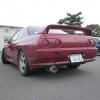New Setup Not Making Enough Power
Announcements
-
Similar Content
-
Latest Posts
-
By TurboTapin · Posted
Have you gotten under the car to look for anything that can rattle? I bet you it's a heat shield. -
By TurboTapin · Posted
If you're really into oil, here's a youtube channel I watch a fair bit. It's literally just about motor oil haha The Motor Oil Geek - YouTube






Recommended Posts
Create an account or sign in to comment
You need to be a member in order to leave a comment
Create an account
Sign up for a new account in our community. It's easy!
Register a new accountSign in
Already have an account? Sign in here.
Sign In Now